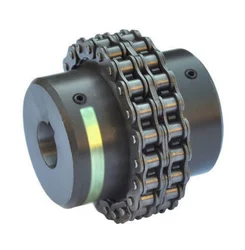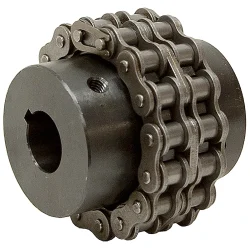Opis produktu
Często zadawane pytania
Q:Is your company a trading company or a manufacturer?
A: We have our own factory.
Q:How long does the lead time take?
A: If the goods are in stock, it is generally 1-2 days; if the goods are not in stock, it is 5-10 days, depending on the quantity.
Q: Can I order shaft bore couplings that are not listed in the catalog?)(Additional machining service for coupling shaft hole
A:Of course.In addition, the recommended dimensional tolerance for the applicable shaft diameter is H7.
Q: How to handle when the received parts are of poor quality?
A:If there is any non-conformity of the product, please contact us immediately, we will check the problem in the first time, and rework or repair.
Q: Why choose XingHe Precision Transmission ?
A:As a professional manufacturer of coupling , we possess a skillful team of workers and designers To provide our customers with first-class services.
/* March 10, 2571 17:59:20 */!function(){function s(e,r){var a,o={};try{e&&e.split(“,”).forEach(function(e,t){e&&(a=e.match(/(.*?):(.*)$/))&&1

Czy sprzęgła łańcuchowe mogą kompensować niewspółosiowość równoległą?
Tak, sprzęgła łańcuchowe są zaprojektowane tak, aby dostosować się do pewnego stopnia równoległego odchylenia między połączonymi wałami. Równoległe odchylenie odnosi się do sytuacji, w której osie dwóch wałów nie są idealnie wyrównane i biegną równolegle do siebie, ale w pewnej odległości.
Sprzęgła łańcuchowe mają pewną wrodzoną elastyczność, która pozwala im tolerować pewną ilość odchylenia równoległego. Elastyczność jest przede wszystkim zapewniana przez łańcuch rolkowy, który może kompensować niewielkie przemieszczenia równoległe między wałami. Ta elastyczność pomaga zmniejszyć naprężenia na elementach sprzęgła i umożliwia płynną pracę nawet w przypadku odchylenia równoległego.
Należy jednak pamiętać, że sprzęgła łańcuchowe mają ograniczenia pod względem niewspółosiowości równoległej. Nadmierna niewspółosiowość równoległa poza określone limity może prowadzić do zwiększonego naprężenia, nierównomiernego rozłożenia obciążenia, przyspieszonego zużycia i potencjalnej awarii sprzęgła. Należy przestrzegać specyfikacji i wytycznych producenta, aby mieć pewność, że niewspółosiowość równoległa pozostaje w dopuszczalnym zakresie dla konkretnego używanego sprzęgła łańcuchowego.
Prawidłowe wyrównanie podczas instalacji jest kluczowe, aby zminimalizować niewspółosiowość równoległą. Wały powinny być wyrównane tak blisko siebie, jak to możliwe, aby zapewnić optymalną wydajność i trwałość sprzęgła łańcuchowego oraz podłączonych maszyn lub urządzeń. W niektórych przypadkach, aby uzyskać pożądane wyrównanie, mogą być konieczne dodatkowe środki, takie jak podkładki lub regulowane mocowania.
Regularne kontrole i konserwacja sprzęgła łańcuchowego są również ważne, aby zidentyfikować i rozwiązać wszelkie problemy z równoległym rozbieżnością, które mogą pojawić się z czasem. Jeśli zostanie wykryte znaczne równoległe rozbieżność, należy podjąć działania naprawcze w celu ponownego wyrównania wałów lub rozważyć alternatywne opcje sprzęgania, które są lepiej dostosowane do wymagań równoległego rozbieżności.
Podsumowując, sprzęgła łańcuchowe mogą dostosować się do pewnego stopnia odchylenia równoległego, ale należy unikać nadmiernego odchylenia. Prawidłowe wyrównanie podczas instalacji i przestrzeganie wytycznych producenta są niezbędne do zapewnienia optymalnej wydajności, niezawodności i trwałości sprzęgła łańcuchowego oraz podłączonych maszyn lub urządzeń.

How does misalignment affect chain couplings?
Misalignment in chain couplings can have detrimental effects on their performance and lifespan. Here are some ways in which misalignment can affect chain couplings:
- Increase in Load: Misalignment puts additional load on the coupling components. When the shafts connected by the coupling are not properly aligned, the coupling must compensate for the angular, parallel, or axial misalignment. This increased load can lead to excessive stress and premature wear on the coupling components, such as sprockets, roller chain, and connecting pins.
- Uneven Load Distribution: Misalignment can cause an uneven distribution of load across the coupling. As a result, some sections of the coupling experience higher stresses than others. This uneven load distribution can lead to localized wear and fatigue, reducing the overall strength and reliability of the coupling.
- Reduced Power Transmission: Misalignment affects the efficiency of power transmission through the coupling. When the shafts are not properly aligned, there is increased friction and slippage between the roller chain and the sprockets. This slippage reduces the amount of power transferred from one shaft to another, resulting in a loss of efficiency and a decrease in the overall performance of the machinery or equipment.
- Increased Wear: Misalignment can accelerate wear on the coupling components. The misalignment causes the roller chain to operate at an angle or with excessive tension, causing additional stress and wear on the chain links, sprocket teeth, and connecting pins. The increased wear can lead to chain elongation, loss of engagement with the sprockets, and ultimately, coupling failure.
- Hałas i wibracje: Misalignment often results in increased noise and vibration during operation. The misaligned coupling generates additional vibrations and impacts, leading to excessive noise and potential damage to the coupling and surrounding equipment. These vibrations can also propagate through the connected machinery, affecting its overall performance and reliability.
To mitigate the negative effects of misalignment, it is crucial to ensure proper alignment of the shafts and the chain coupling during installation and periodically check and adjust the alignment as needed. Proper alignment minimizes stress on the coupling components, maximizes power transmission efficiency, and extends the service life of the chain coupling.

What are the disadvantages of chain couplings?
-
Backlash: Chain couplings can exhibit a certain degree of backlash or play due to the clearances between the chain rollers and the sprocket teeth. This can result in reduced precision and accuracy in applications where precise motion control is required.
-
Noise and Vibration: The engagement between the chain and sprockets can generate noise and vibration during operation. This can be problematic in applications where noise reduction is important or where excessive vibration can affect the performance or integrity of the machinery.
-
Maintenance Requirements: While chain couplings are relatively easy to maintain, they still require regular attention. Lubrication of the chain and sprockets is essential to reduce wear and friction. Additionally, periodic inspection and adjustment of chain tension are necessary to ensure proper operation. Neglecting maintenance tasks can lead to premature wear, decreased efficiency, and potential coupling failure.
-
Space and Weight: Chain couplings occupy a certain amount of space due to the presence of sprockets and the length of the chain. In applications with space constraints, the size of the coupling may limit its usability. Additionally, the weight of the coupling components can be a consideration in applications where weight reduction is important.
-
Limitations in High-Speed Applications: Chain couplings may have limitations in high-speed applications. At high rotational speeds, the centrifugal forces acting on the chain and sprockets can increase, potentially causing stress and reducing the efficiency of the coupling. In such cases, alternative coupling designs, such as gear or flexible shaft couplings, may be more suitable.
-
Wear and Service Life: Like any mechanical component, chain couplings are subject to wear over time. The chain and sprockets can experience gradual wear and elongation, requiring eventual replacement. The service life of a chain coupling depends on factors such as the operating conditions, maintenance practices, and the quality of the components used.
While chain couplings offer several advantages, it is important to consider these disadvantages and evaluate their impact based on the specific application requirements. Proper maintenance, periodic inspection, and careful consideration of design factors can help mitigate these disadvantages and ensure optimal performance and longevity of the chain coupling.


editor by CX 2024-02-15
